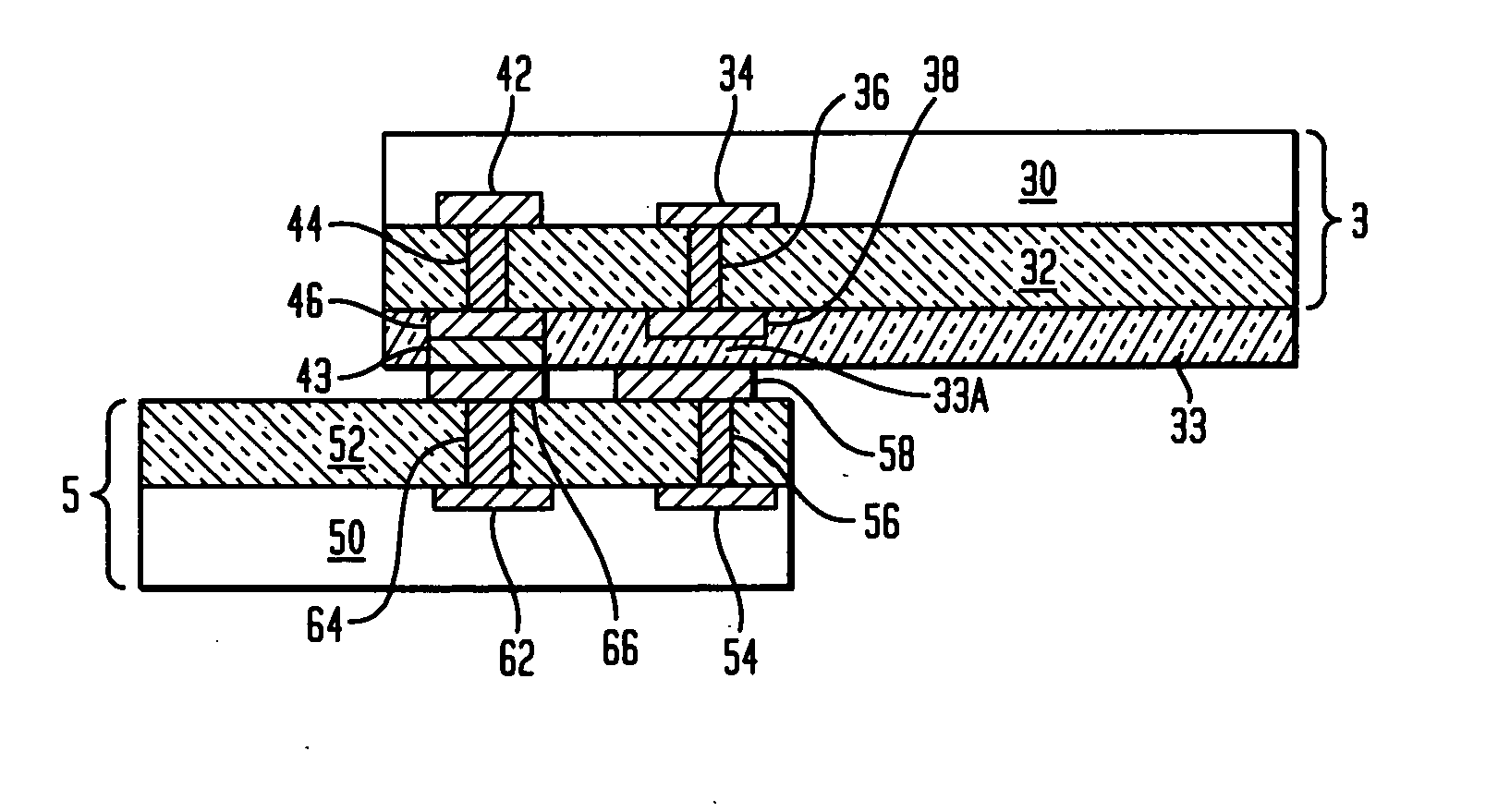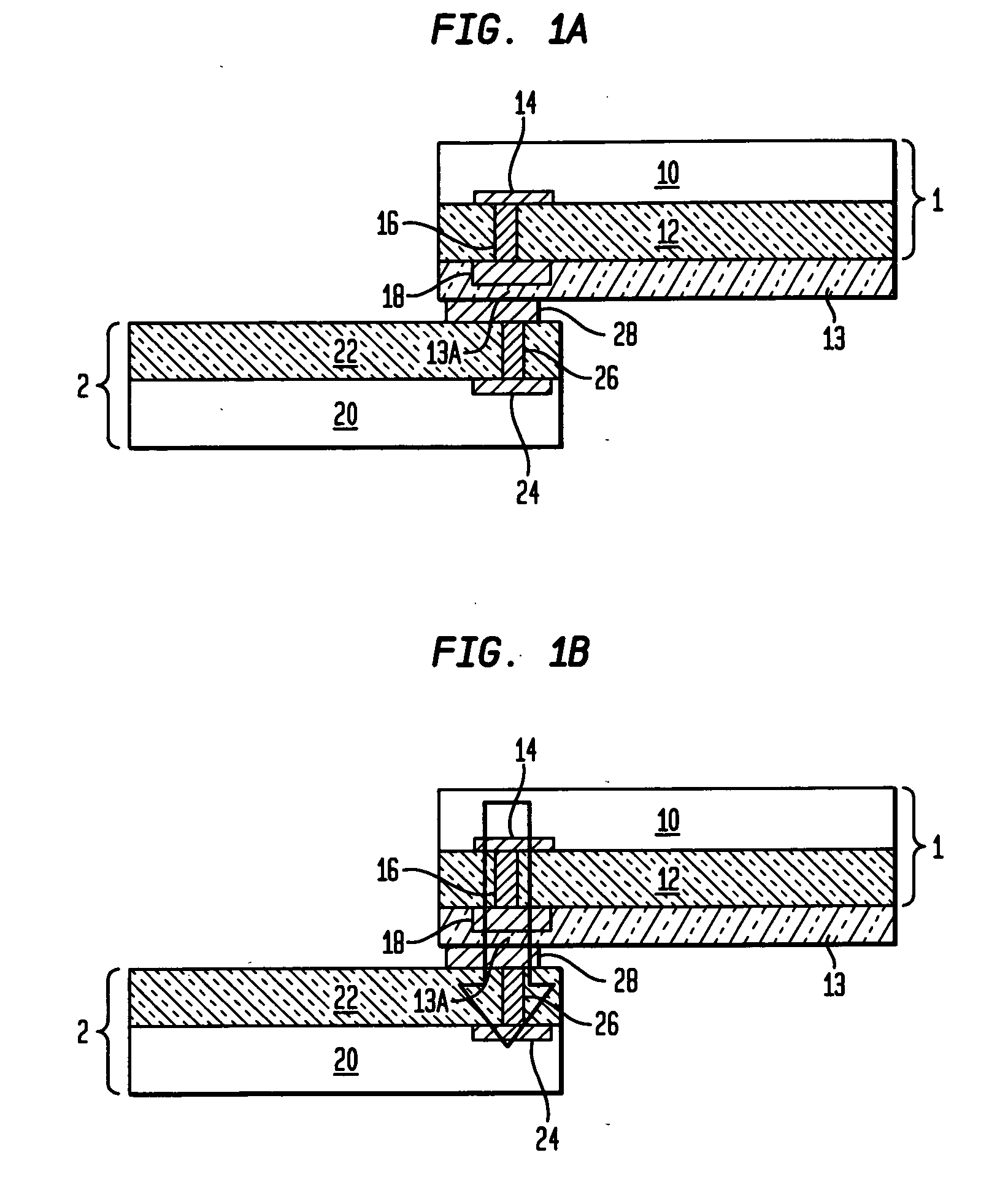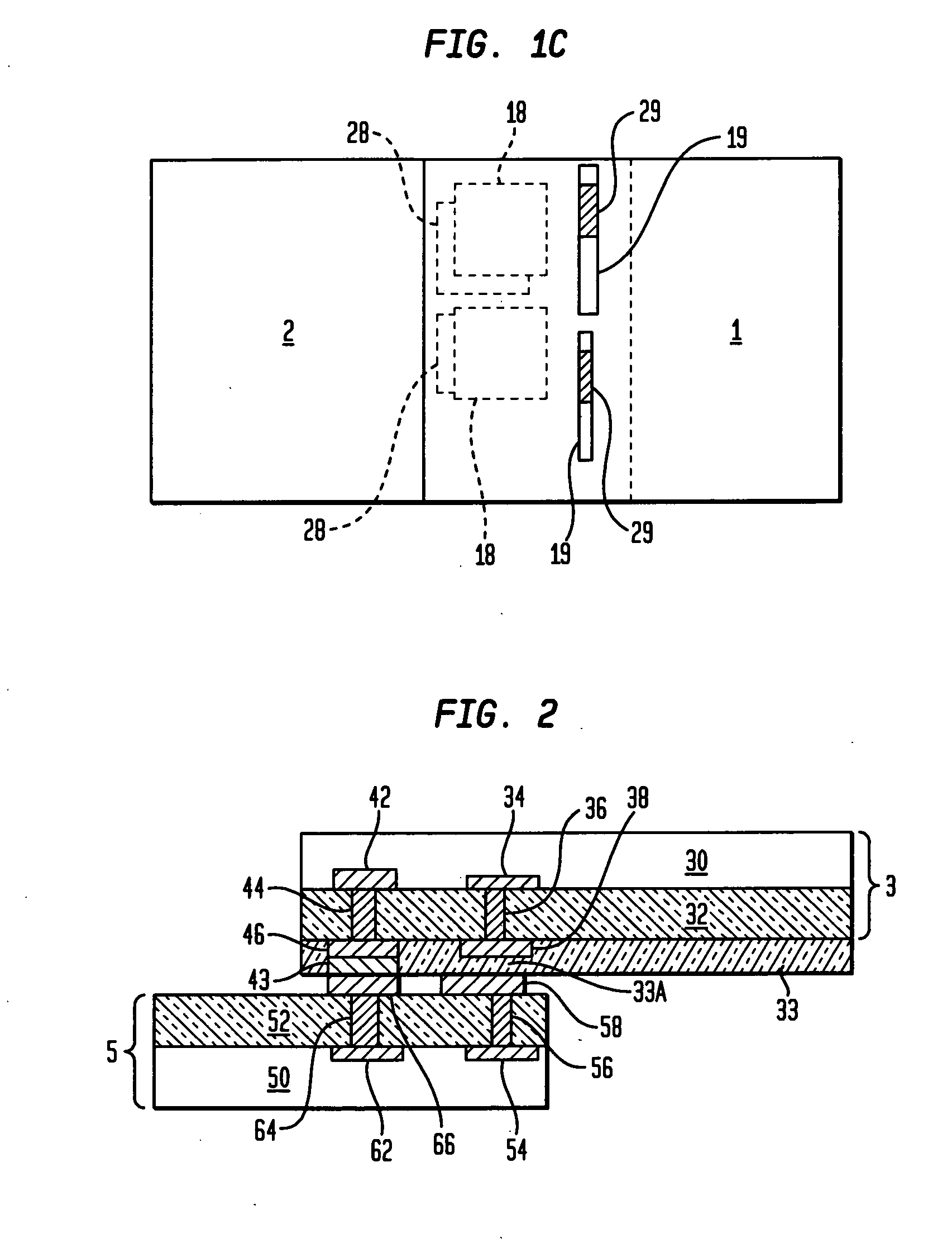Inter-chip ESD protection structure for high speed and high frequency devices
a protection structure and high-speed technology, applied in the direction of superconductor devices, emergency protection circuit arrangements, and arrangements responsive to excess voltage, can solve the problems of high discharge rate, failure or degradation, and static electricity can destroy or substantially harm many of today's integrated circuits, so as to reduce the loading capacitance, improve system performance, and reduce the effect of the “net” capacitan
- Summary
- Abstract
- Description
- Claims
- Application Information
AI Technical Summary
Benefits of technology
Problems solved by technology
Method used
Image
Examples
Embodiment Construction
[0040] The present invention provides a semiconductor structure that is suitable for high speed, high bandwidth, and / or high frequency applications, such as RF or digital signal transmissions. The semiconductor structure of the present invention provides direct, chip-to-chip wireless signal coupling. More importantly, the semiconductor structure contains simplified ESD protection structures with significantly reduced footprints. Such ESD protection structures solve the charging problem in inter-chip signal transmission network and can be readily scaled according to specific application requirements.
[0041] In the following description, numerous specific details are set forth, such as particular structures, components, materials, dimensions, processing steps and techniques, in order to provide a thorough understanding of the present invention. However, it will be appreciated by one of ordinary skill in the art that the invention may be practiced without these specific details. In oth...
PUM
 Login to View More
Login to View More Abstract
Description
Claims
Application Information
 Login to View More
Login to View More - R&D
- Intellectual Property
- Life Sciences
- Materials
- Tech Scout
- Unparalleled Data Quality
- Higher Quality Content
- 60% Fewer Hallucinations
Browse by: Latest US Patents, China's latest patents, Technical Efficacy Thesaurus, Application Domain, Technology Topic, Popular Technical Reports.
© 2025 PatSnap. All rights reserved.Legal|Privacy policy|Modern Slavery Act Transparency Statement|Sitemap|About US| Contact US: help@patsnap.com



